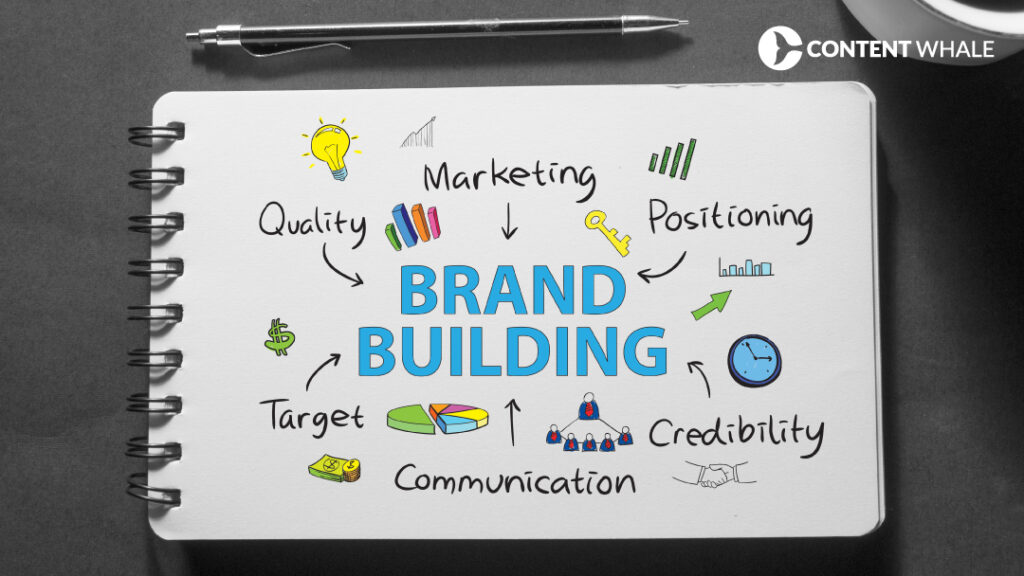Building a brand from scratch can seem like a daunting task, but it doesn’t have to be. In fact, some of the most epic brand building case studies show that it’s entirely possible to go from zero to hero—if you know the right moves.
We’re talking about brands that didn’t just survive but thrived by using powerful marketing strategies that hit home with their target audiences. These brands didn’t stumble upon success by accident—they followed smart, proven tactics. And guess what? You can learn from these brand growth stories and apply the same principles to your own business.
So, whether you’re a startup looking for your big break or an established brand aiming for your next level, this blog is for you. Dive into these successful branding examples, and see how you can transform your brand just like they did.
1. Apple: Redefining Innovation and Simplicity
Apple’s transformation from a company on the brink of collapse to a global tech giant is one of the most epic brand building case studies in history. It’s more than just selling products; it’s about offering a seamless experience through its tightly integrated ecosystem of devices and services. This strategy keeps customers deeply invested in the brand, making it difficult for them to leave.
A) Key Elements of Apple’s Brand Success:
- Seamless Ecosystem: Apple’s devices are designed to work together effortlessly. Once a customer buys into the Apple ecosystem with an iPhone, they’re likely to stick with Apple for other devices like the MacBook, iPad, and services like iCloud. This creates long-term loyalty.
- Minimalist Design & Innovation: Apple’s focus on simplicity paired with cutting-edge technology has set it apart. Whether it’s the sleek design of the iPhone or innovative features like Face ID, the brand’s identity revolves around delivering elegant, easy-to-use products.
- Brand Identity Evolution: From being a niche computer manufacturer to a luxury tech brand, Apple’s brand transformation has been remarkable. Their products have become status symbols, synonymous with innovation and high-quality design.
B) The “Shot on iPhone” Campaign
One of Apple’s standout marketing strategies was the “Shot on iPhone” campaign. It:
- Encouraged User-Generated Content: Apple invited users to showcase photos taken with iPhones, positioning the product as a tool for creativity.
- Built a Community: The campaign didn’t just promote the product; it also created a sense of community and belonging among Apple users.
- Drove Engagement & Sales: With millions of social media interactions, the campaign showcased Apple’s ability to create buzz while driving brand loyalty and product sales.
C) Lessons from Apple’s Branding Innovation:
- Customer Loyalty: Apple’s seamless ecosystem ensures customers stay within its product lineup, creating long-term loyalty.
- Consistent Messaging: Apple’s marketing stays consistent, focusing on quality, simplicity, and innovation, reinforcing the brand’s values.
- Turning Customers into Brand Ambassadors: By tapping into user-generated content, Apple transforms its users into active promoters of the brand.
D) Key Takeaways:
- Apple’s seamless integration of devices and services creates long-lasting customer relationships.
- Their minimalist design and continuous innovation keep the brand ahead of competitors.
- Campaigns like “Shot on iPhone” demonstrate the power of user engagement in building brand loyalty.
2. Meesho: Empowering Small Businesses in India
Meesho’s journey is a prime example of epic brand building case studies where a startup managed to disrupt the Indian e-commerce space by focusing on affordability and accessibility. Starting as a platform for resellers, Meesho now empowers over 13 million entrepreneurs, many of whom are women, enabling them to run businesses from home with minimal investment.
A) Key Elements of Meesho’s Brand Success:
- Targeting Tier II and III Cities: Meesho tapped into underserved markets by offering affordable products to customers in smaller cities and towns. This move helped the brand capture a significant portion of India’s growing e-commerce market.
- Empowering Women Entrepreneurs: Meesho’s mission of enabling women to become entrepreneurs is central to its brand growth story. The platform has over 1.5 lakh women sellers, making it a platform for empowerment and economic independence. Their campaigns, such as #MyStoreMyStory, celebrate women breaking barriers to create successful businesses from home.
- Affordable Pricing: Meesho’s marketing strategies emphasize affordability. With campaigns like ‘Sahi Sahi Lagao Na’ and ‘Meesho Pe Sab Kuch,’ the brand has positioned itself as the go-to platform for cost-conscious buyers. This focus on low prices without compromising on variety has been a game-changer.
B) Social Media & Influencer Marketing
Meesho’s branding innovation is also evident in its use of digital marketing. The brand effectively leverages social media platforms like Instagram and YouTube, curating content that appeals to its diverse audience segments. By collaborating with micro-influencers who resonate with local and regional audiences, Meesho has built strong engagement and brand loyalty, especially in Tier II and III cities.
C) Regional Focus & Inclusivity
One of the standout elements of Meesho’s brand identity evolution is its focus on regional languages and cultures. By adding multiple language options and localizing its marketing campaigns, Meesho ensures it reaches a wide audience across India’s diverse landscape. This approach has not only boosted brand engagement but has also made the platform more accessible to users from all walks of life.
D) Key Takeaways:
- Meesho’s focus on empowering small businesses, especially women-led ventures, has fueled its success.
- Affordability and regional inclusivity are central to its growth, making it one of the most inspiring brand case studies in the Indian e-commerce space.
- Their digital marketing and influencer collaborations have significantly enhanced their brand presence and customer loyalty.
3. Zerodha: Disrupting the Stock Broking Industry
Zerodha’s rise as India’s largest stock brokerage firm is one of the most epic brand building case studies in the fintech world. Starting in 2010 with a vision to simplify trading and remove barriers, Zerodha transformed the stock broking industry by pioneering a zero-brokerage model and focusing on customer-centric innovation.
A) Key Elements of Zerodha’s Brand Success:
- Zero Brokerage Model: Zerodha introduced India’s first zero-brokerage model for equity delivery trades. This not only disrupted traditional brokers who charged a percentage of trade value but also made trading more accessible to a wider audience.
- Customer-Centric Approach: Instead of spending heavily on marketing, Zerodha focused on building trust through transparent pricing and user education. The platform’s educational resource, Varsity, became a go-to learning hub for retail investors, setting them apart from competitors.
- Leveraging Technology for Simplicity: Zerodha’s proprietary platform, Kite, is a user-friendly interface that made trading easy, even for beginners. The platform’s mobile-first design attracted millions of users and helped the company scale efficiently.
B) Growth Without External Funding
Unlike many startups, Zerodha avoided external funding, maintaining control over its growth strategies. The company’s growth was organic, largely driven by word of mouth, community outreach, and a referral program that rewarded users for bringing new customers. Over 60% of its clients came through these referrals, keeping acquisition costs low.
C) Educational Initiatives and Social Media Strategy
Zerodha’s brand innovation extended into social media and educational content. By collaborating with financial influencers and offering free resources on investing, the company fostered a community of loyal users. Their transparency and focus on empowering customers with knowledge led to a surge in user engagement.
D) Key Takeaways:
- Zerodha’s zero-brokerage model democratized trading for millions of new investors.
- The company’s focus on education and transparency built lasting customer trust and loyalty.
- Organic growth through referrals and community-building, rather than heavy marketing, helped Zerodha scale sustainably.
4. Tesla: Driving Innovation in Sustainable Energy
Tesla’s journey from a niche electric vehicle (EV) startup to a global leader in sustainability is one of the most epic brand building case studies in modern business. The brand, led by Elon Musk, has redefined not just cars, but the entire concept of sustainable energy. Tesla’s success stems from a combination of cutting-edge technology, powerful branding, and a community-driven approach to marketing.
A) Key Elements of Tesla’s Brand Success:
- Focus on Innovation: Tesla’s brand transformation is rooted in its relentless focus on innovation. From electric vehicles to renewable energy solutions, Tesla’s products emphasize sustainability while offering high performance. The company’s flagship products, such as the Model S and the Cybertruck, continue to disrupt the automotive market by offering futuristic designs and advanced technology.
- Zero Advertising Spend: One of Tesla’s most remarkable achievements is its ability to become a household name without traditional advertising. The company relies heavily on word-of-mouth marketing and user-generated content, creating viral moments like the famous Cybertruck launch that garnered massive attention despite a failed window demonstration. Tesla’s social media presence, particularly Elon Musk’s Twitter engagement, has helped cultivate a loyal and engaged fanbase.
- Customer-Centric Approach: Tesla’s marketing strategies revolve around enhancing the customer experience. From seamless online purchasing to the development of a robust Supercharger network, Tesla prioritizes convenience and satisfaction, ensuring that customers remain loyal to the brand. By integrating sales and service in its “Service Plus” centers, Tesla simplifies the ownership experience, strengthening its connection with customers.
B) Sustainability and Brand Loyalty
Tesla’s commitment to sustainability resonates deeply with its audience. Its eco-conscious approach, backed by industry-leading innovation in battery technology and renewable energy, aligns perfectly with the values of environmentally conscious consumers. Tesla’s branding innovation reflects this dedication, positioning the company as a forward-thinking, responsible brand in the eyes of consumers.
C) Viral Marketing and Community Engagement
Tesla thrives on inspiring brand case studies by leveraging social media and community-driven marketing. The company’s product launches, including the viral Cybertruck event and “party mode” features, generate excitement without the need for paid advertising. Tesla’s community involvement, including GitHub collaborations and influencer partnerships, allows it to stay relevant and continuously engage its audience.
D) Key Takeaways:
- Tesla’s innovation-first approach is the core of its brand success stories.
- The company’s zero-dollar advertising strategy, relying on organic buzz and community engagement, sets it apart from traditional automakers.
- Tesla’s focus on sustainability aligns with consumer values, fostering deep brand loyalty.
5. Mattel: Reinventing Barbie for a New Generation
Mattel’s brand transformation of Barbie stands out as one of the most epic brand building case studies. Faced with declining sales and criticism that Barbie promoted unrealistic standards, Mattel took bold steps to revitalize its iconic doll.
A) Key Elements of Barbie’s Brand Revival:
- Focus on Diversity and Inclusion: Mattel introduced Barbie dolls in multiple body types, skin tones, and careers to reflect a more inclusive world. This branding innovation helped reposition Barbie as a role model for young girls.
- Collaboration with Hollywood: The 2023 Barbie movie, directed by Greta Gerwig, played a key role in Barbie’s cultural comeback. It didn’t just promote toys but sparked conversations about identity and societal roles, making Barbie relevant for a new generation. This film, combined with 165 brand partnerships, fueled massive sales growth and extended Barbie’s cultural reach.
- Expanding Barbie Beyond Toys: Mattel now sees Barbie as a lifestyle brand, extending its reach into fashion, gaming, and even movies. This broader audience appeal has cemented Barbie as a pop culture icon once again, making it one of the most inspiring brand case studies in recent times.
B) Key Takeaways:
- Mattel’s shift to diversity and inclusion brought a modern relevance to Barbie.
- Collaborating with entertainment has broadened Barbie’s appeal beyond traditional toys, generating both cultural and commercial success.
- This brand success story shows how a legacy brand can transform itself by evolving with societal expectations while still maintaining its core identity.
Conclusion

Building a brand from scratch is a challenging yet rewarding process, as seen in the epic brand building case studies of Apple, Meesho, Zerodha, Tesla, and Mattel. These companies have not only redefined their industries but have also set the benchmark for how to turn ideas into globally recognized brands. Whether it’s through innovative products, a customer-first approach, or a commitment to societal values, these successful branding examples show that with the right marketing strategies and persistence, any brand can achieve success.
At Content Whale, we understand the intricacies of building a brand that resonates with audiences and stands out in competitive markets. From crafting compelling brand narratives to creating strategic content, our expertise in brand transformation can help you tell your brand’s story in the most engaging way possible.
Let us help you create the next brand success story—one that’s not only memorable but impactful. Reach out to us and let’s build a brand that will inspire, innovate, and thrive.
FAQs
1. What is the most important aspect of brand building?
Understanding your target audience is the foundation of any brand-building effort. Brands need to know who they are speaking to in order to craft a message that resonates. A clear brand strategy—defining your mission, values, and positioning—is essential to connecting with your audience and building trust.
2. How did Apple build brand loyalty?
Apple created loyalty through a seamless ecosystem of products and services, alongside innovative marketing strategies that highlight user experience and simplicity. Their focus on high-quality design and brand identity evolution keeps customers coming back and strengthens emotional connections with the brand.
3. How does Meesho empower small businesses?
Meesho empowers small businesses, particularly women entrepreneurs in India, by offering a platform that makes it easy to sell without upfront costs. This brand success story exemplifies how a focus on local markets and user-friendly features can drive brand growth stories that inspire.
4. What made Zerodha’s branding successful?
Zerodha disrupted the stockbroking industry with a zero-brokerage model, focusing on transparency and user education. By offering an intuitive platform and resources like Varsity for financial education, Zerodha has organically built trust, making it one of the most successful branding examples in fintech.
5. Why did Mattel rebrand Barbie?
Mattel rebranded Barbie to reflect modern values around diversity and inclusion, introducing dolls with different body types, ethnicities, and professions. This brand transformation helped the company appeal to a broader audience, positioning Barbie as a cultural icon that aligns with current societal expectations.





